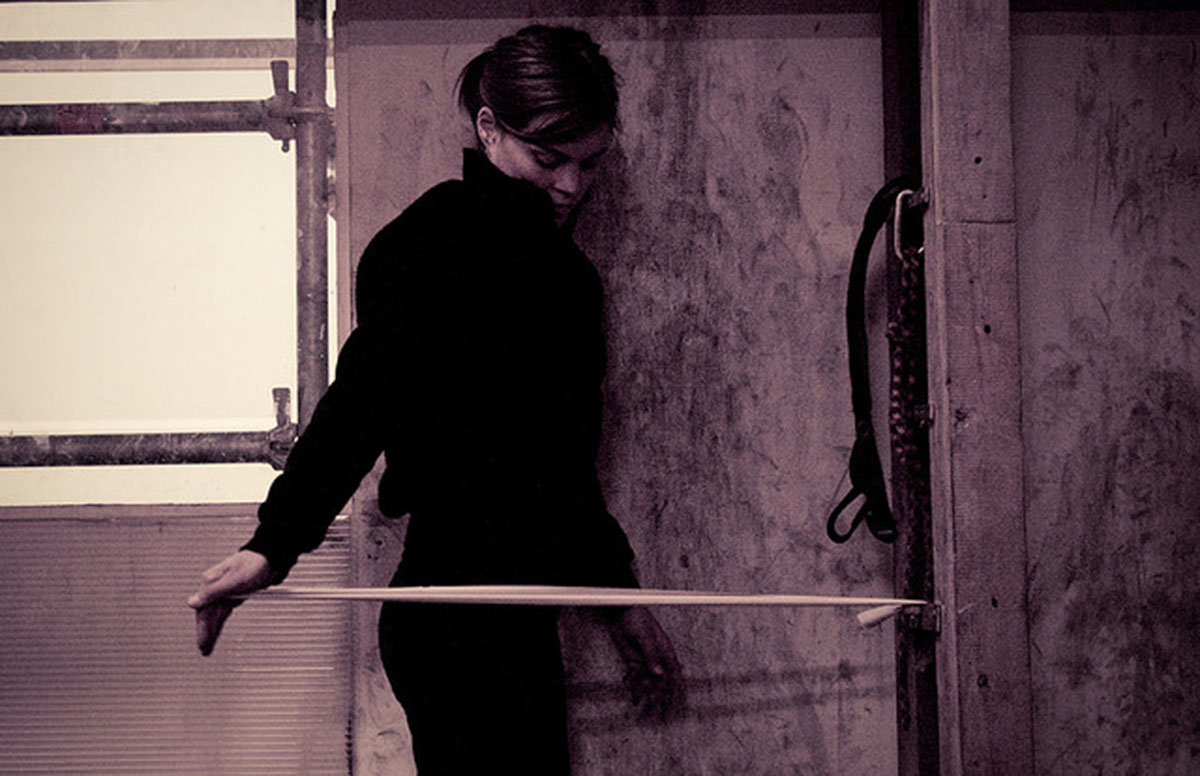Table of Contents
The Fencing Problem: Shoulder Stability
Shoulder stability is very important for a fencer. Poor shoulder stability means less control over the blade and more potential for injury. In the vast majority of cases, what makes shoulders unstable is poor scapula positioning during actions, caused by poor neurological activation and patterning. Weakness in the muscles themselves is usually a result of this, so the way to improve shoulder stability is through patterning work.

The Fix: Band Press-Outs
Stand with a resistance band held in both hands. Hold one hand at shoulder height and close to your body, and extend the other arm at shoulder height. You want the pressure from the band to be as lateral as possible, and noticeable but not too difficult. You shouldn't have to concentrate on making extra effort: this is a patterning movement.
The Details
The extended arm should have the thumb up and the point of the elbow vertically down to encourage the use of the humeral external rotators to resist the pull of the band during the movement. The retracted hand should have the palm facing the body with the forearm vertical to preferentially stress the biceps and upper back, making holding the band in place easier. To improve the effect of this exercise, draw circles or figures of eight with the extended arm between extensions.
The Fencing Problem: Grip And Shoulder Mobility
The shoulder is an odd joint. It's a complex joint — many parts must move together, so there's a lot to go wrong. If one part of your shoulder is fixed in place because of an injury you'll see the whole structure go wrong as the rest deforms to accommodate the disruption. Meanwhile, grip strength is essential for a fencer, not because holding onto the sword like grim death is the way to win matches, but because more strength means when you hold the sword lightly and with control, you'll have more control.
The Fix: Sledgehammer Casts
It's hard to do these if you live in a flat. But you can buy short handled sledges with heavier heads to compensate. Use one or two hammers according to taste. If you're new to these use light hammers — 7lb, the lightest standard sledgehammer head, is plenty and may be too heavy for some. Stand with your hammers held vertical, your elbows touching your sides, neck erect, back straight and shoulders relaxed.
READ Tai Chi: When Martial Art Is Used To Fight Stress And Embrace Life
Allow that to help pull the hammer back into its starting position. That's a basic cast. BE CAREFUL not to hit yourself in the spine (or anywhere else) with a sledgehammer. If you think you might, don't do this one or wrap your sledgehammer head in foam. Done right this is perfectly safe. It helps your triceps work better and develops mobility in the shoulder joint naturally, and at the same time it's a grip workout like no other with the hand in an appropriate position for fencing.
If you like what you've read, have something to add or feel I've left something out, please get in touch in the comments section below.
- Photo courtesy of Synergy by Sharka via Flickr:https://www.flickr.com/photos/shaarka/7730603380/
- Photo courtesy of liquene: www.flickr.com/photos/liquene/4042007870/


Your thoughts on this